Logo in Branding: The Role of Symbols in Building Brand Identity
What makes a logo a linchpin in branding? Simple yet potent, a logo is the cornerstone of a brand’s identity. In this exploration of logo in branding, we’ll dissect how a meticulously designed logo functions across marketing materials, taps into emotional connection, and must synchronize with an overarching branding strategy to amplify a brand’s voice in a crowded marketplace.
Key Takeaways
- A logo is fundamental to a brand’s identity, offering unique recognition and consistent presentation across various platforms, while embodying the company’s values and mission.
- Effectively designed logos build emotional connections with their audience and communicate brand personality, balancing visual elements with brand messaging for a lasting impact.
- The branding process encompasses the entire journey of logo creation, from initial concept and strategic design to achieving legal trademark status, and the right branding agency plays a crucial role in its success.
The Significance of Logo Design in Brand Identity
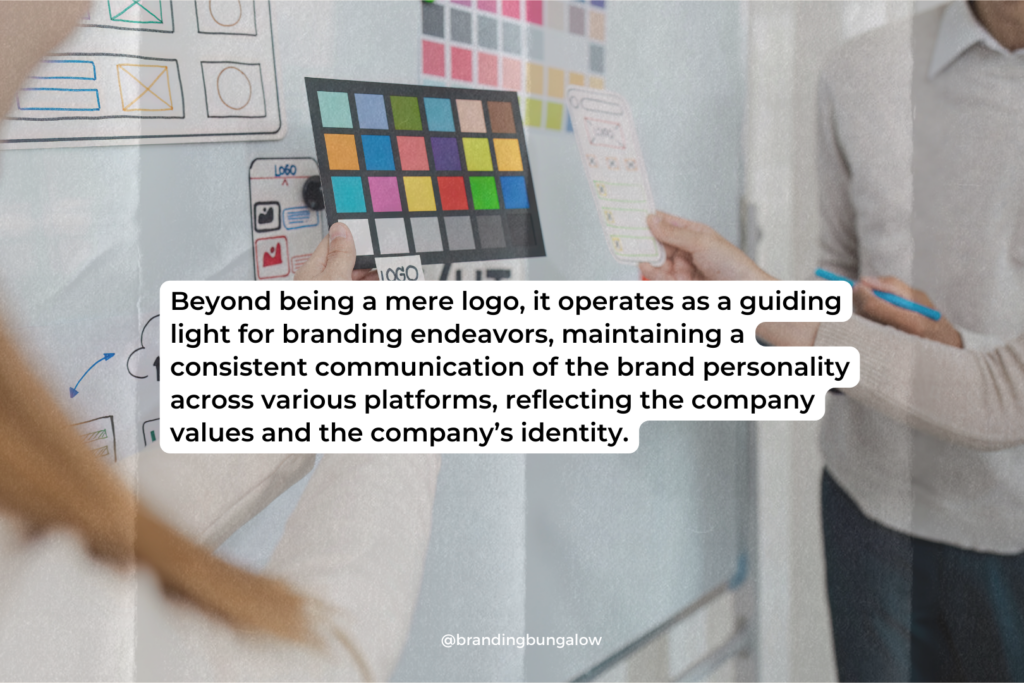
A logo serves as the foundation of a brand’s identity, speaking volumes through visuals even before words are read. It introduces a business to its potential customers, providing a preview into the brand’s essence. Through logo design, a brand stands distinguished. The logo provides a unique identity that resonates at every customer touchpoint and fosters long-term recognition and loyalty.
Beyond being a mere logo, it operates as a guiding light for branding endeavors. It maintains a consistent communication of the brand personality across various platforms, reflecting the company values and the company’s identity.
Defining a Well-Designed Logo
A well-designed logo should be easily recognisable, scalable, and capable of withstanding the test of time. It’s the harmony of simplicity, versatility, timelessness, and memorability that makes a logo not just a graphic element but a powerful brand message carrier.
A well-designed logo stands out by conveying the brand’s essence without unnecessary complexity. It should retain its impact whether displayed on a smartphone screen or a billboard.
Logo Designers’ Crucial Role
Logo designers, akin to alchemists of the branding world, are tasked with the translation of a company’s identity into visual form. These creative experts capture the essence of a brand’s personality and transform it into a visual symbol that becomes representative of the company.
Logo designers ensure that their expertise lies in interpreting and expressing the brand’s messaging through the fusion of color, shape, and typography, not the other way around, focusing solely on their artistic skills.
The Logo’s Function Across Marketing Materials
Logos act as versatile champions, demonstrating adaptability across multiple marketing materials. They provide a constant brand presence, from digital to physical platforms. This presence embodies its values and maintains consistent branding across different platforms. Logos are meticulously crafted to be effective in diverse contexts, with variations designed to maintain clarity and recognizability, whether they are embroidered on merchandise or splashed across a website.
Crafting a Logo That Communicates Your Brand’s Personality
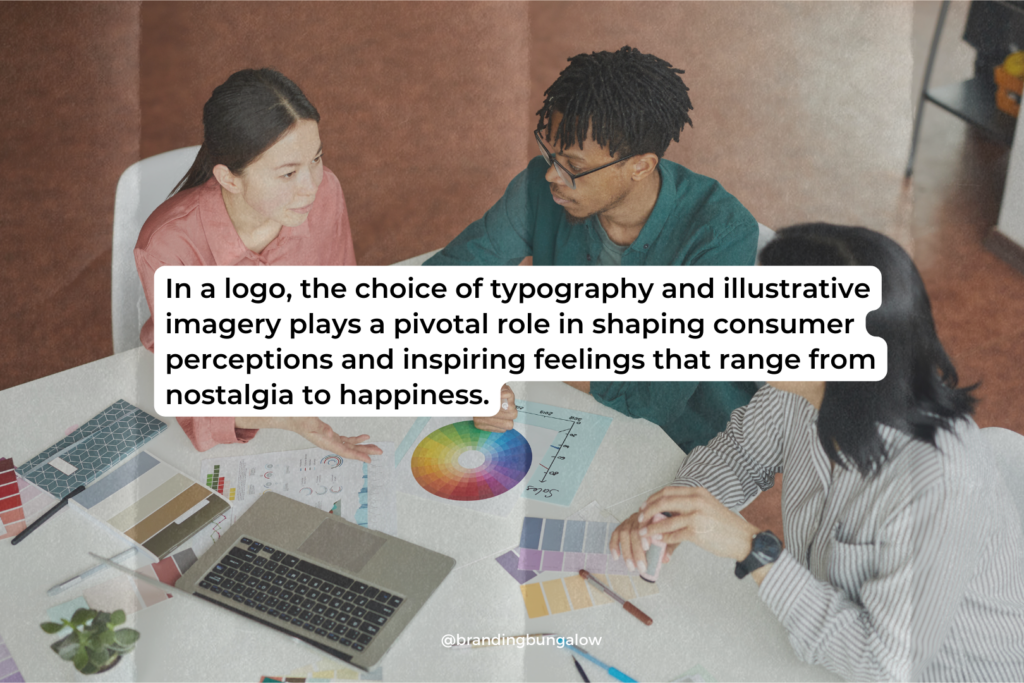
The essence of a logo is rooted in its capacity to encapsulate and express the brand’s core values. It should reflect its personality and forge a deep connection with the target audience. It’s this deeper connection that transforms a mere symbol into an emblem of the brand’s identity, resonating with consumers and evoking a spectrum of emotional responses.
A logo transforms into a storytelling device. It narrates the brand’s journey through its design while cultivating a relationship with the audience that transcends mere visuals.
Emotional Connection: More Than Just a Logo
An effective logo captures the heart of the audience from its very first glimpse. In doing so, it establishes a rapport that is vital for brand recall. The choice of typography and illustrative imagery plays a pivotal role in shaping consumer perceptions and inspiring feelings that range from nostalgia to happiness.
Icons like the WWF panda or the Starbucks siren are prime examples of logos that tell a story, sparking emotional reactions and cementing the brand’s place in the audience’s memory.
Balancing Visuals and Brand Messaging
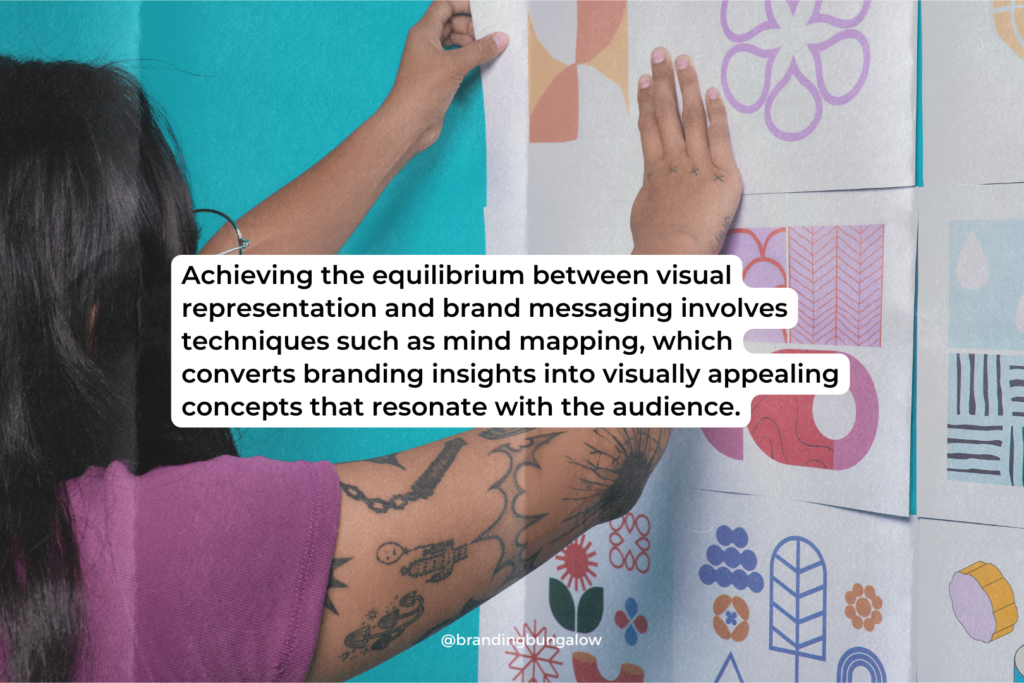
Thoughtfully chosen color schemes and typography within a logo carry significant meaning, shaping consumer perception and nurturing emotional connections. Achieving the equilibrium between visual representation and brand messaging involves techniques such as mind mapping, which converts branding insights into visually appealing concepts that resonate with the audience.
It’s this delicate equilibrium that ensures the logo not only looks appealing but also communicates the brand’s message with clarity and precision.
Case Studies: Logos That Became Icons
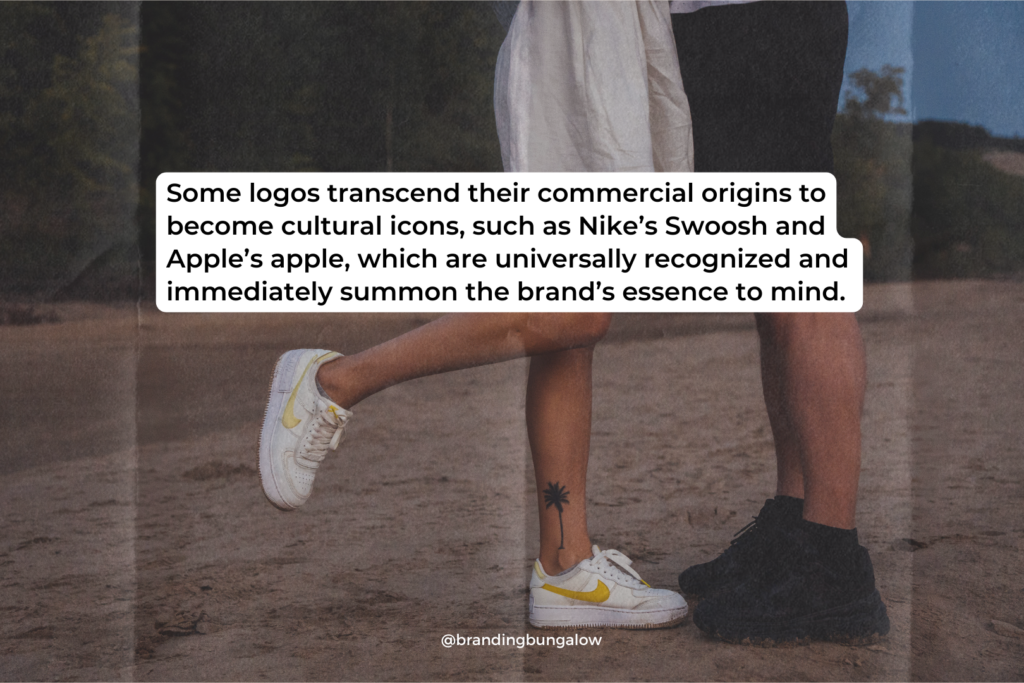
Some logos transcend their commercial origins to become cultural icons, such as Nike’s Swoosh and Apple’s apple, which are universally recognized and immediately summon the brand’s essence to mind. McDonald’s Golden Arches and the Twitter bird demonstrate the power of a logo to effectively convey a brand’s attributes, from speed and convenience to real-time communication.
Meanwhile, the elegance of the Mercedes-Benz star encapsulates the luxury and performance that the brand represents, showcasing how a logo can embody the stature of a brand within its industry.
Integral Elements of a Branding Strategy
A branding strategy resembles a complex tapestry, intertwining elements like corporate identity, product specifics, and customer service reputation to forge a unique brand. It’s about aligning the strategic vision of a branding agency with the business’s overarching goals and core values to create a branding approach that resonates authentically and transparently with the target audience.
Beyond the Logo: Other Elements of Branding
The branding journey encompasses more than just the logo. It includes:
- Target audience personas
- A cohesive color palette
- Suitable fonts
- Meticulously selected images that align harmoniously with the brand’s identity
A strong, consistent brand voice across various mediums, from advertising to social media, sets a brand apart in a crowded marketplace.
The power of color in branding cannot be overstated, as it can elicit specific emotions and project the brand’s values through its palette.
Consistency is Key: Maintaining a Unified Brand Image
Consistent design elements bind a brand identity together, forming a robust image that boosts brand recognition and trust. The use of brand guidelines and specifications for logo usage, supported by tools like digital asset management software, ensures that brand elements are applied uniformly, fostering a unified image that resonates with consumers and streamlines marketing campaign creation.
A well-executed branding strategy, coupled with a well-designed logo, empowers organizations to communicate their messages effectively and position themselves as leaders in their industry.
Service Branding vs. Product Branding
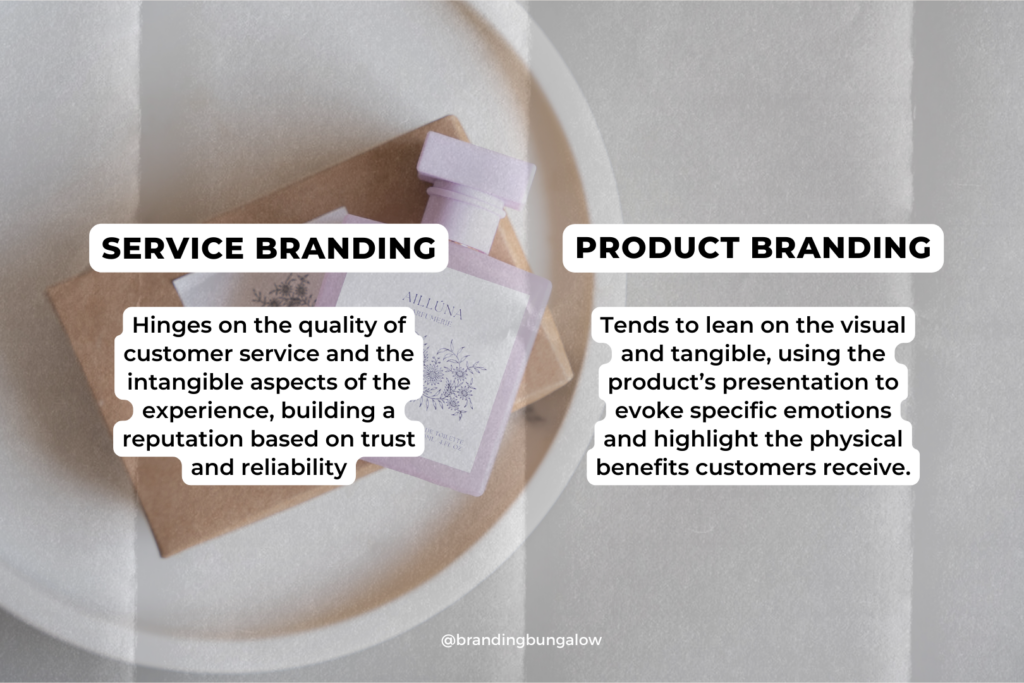
The distinction between service branding and product branding lies in the focus of the brand’s narrative. Service branding hinges on the quality of customer service and the intangible aspects of the experience, building a reputation based on trust and reliability. Storytelling and testimonials play a more pronounced role in service branding, where the absence of a physical product places a greater emphasis on forming an emotional connection with the audience.
In contrast, product branding tends to lean on the visual and tangible, using the product’s presentation to evoke specific emotions and highlight the physical benefits customers receive. Although the approaches differ, the overarching process of creating a branding strategy remains consistent, involving thorough market analysis and competitor research.
From Concept to Trademark: The Journey of a Logo in Branding
The journey of a logo from its inception to becoming a permanent symbol of a brand unfolds a narrative of creativity and strategic thought. It begins with the distillation of a company’s core values and mission, which informs the visual concept that ultimately becomes the emblem of the business.
This journey sees a logo evolve through the following steps:
- Brainstorming
- Drafting
- Refinement to align with the company’s branding objectives
- Registration as a trademark to secure its place in the business landscape.
The Birth of a Logo: Concept Development
Concept development serves as the fertile soil where the initial ideas of a logo are planted. Designers engage in brainstorming sessions, sketch a variety of drafts, and experiment with creative directions to uncover the logo that best represents the brand.
Digital tools bring the sketches to life. They allow for refinements and adjustments based on feedback, culminating in a design that encapsulates the company’s values and resonates with its identity.
The Active Process of Branding with Your Logo
A logo is not merely an aesthetic addition to a page. It plays an active role in enhancing brand recognition, fostering customer loyalty, and building trust. Strategic placement and thoughtful marketing campaigns ensure that the logo serves as a consistent and familiar beacon to consumers, reinforcing the brand’s messaging and values. It symbolizes the company’s commitment to quality and serves as a visual anchor that inspires customer loyalty. Thus, a logo plays a dynamic role in branding efforts.
When a Logo Becomes a Trademark
A logo’s transformation into a trademark marks a watershed moment in its journey, conferring upon it legal protection and solidifying its association with a single brand. This legal registration not only prevents unauthorized use but also signals to the market the company’s commitment to its brand.
A trademarked logo assures customers of the brand’s quality and reliability. It lends credibility and fosters trust while protecting the company’s reputation from infringement.
Choosing the Right Branding Agency for Your Logo Creation
Choosing the perfect branding agency for logo creation involves:
- Scrutinizing portfolios
- Understanding reputations
- Ensuring a cultural fit that aligns with the company’s identity and values
- Evaluating the agency’s track record
- Assessing creativity and communication practices
- Assessing their ability to navigate brand crises
All of these factors contribute to the success of the branding efforts.
What to Look for in a Branding Agency
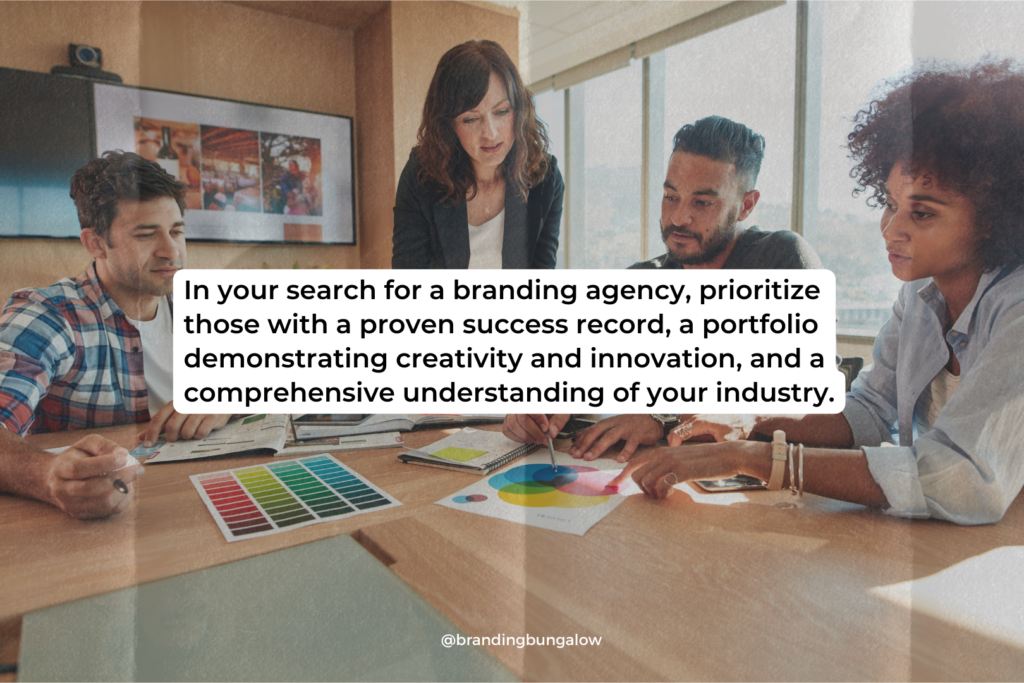
In your search for a branding agency, prioritize those with a proven success record, a portfolio demonstrating creativity and innovation, and a comprehensive understanding of your industry. A cultural fit and the agency’s approach to teamwork are just as crucial as their design prowess. These ensure a partnership that is cohesive, collaborative, and aligned with your brand’s vision.
Collaborating with Designers: A Partnership
A fruitful partnership with a branding agency is built on:
- Mutual understanding
- Open communication
- Fostering a collaborative environment
- Creating a logo that truly stands for the brand
This partnership is a dialogue. Ideas flow freely and the brand’s vision is translated into a visual identity that connects with the target audience.
Real Meaning Behind a Logo: It’s Not Just Art
The symbolism behind a logo extends beyond mere artistic expression. It serves as a communicative symbol of a brand’s identity, setting expectations and encouraging brand recall. Logos employ symbols to represent the brand in both explicit and subtle ways. The brand’s core concept and the audience’s perceptions influence these symbols, as well as cultural associations with the chosen style, colors, and fonts.
Summary
Through the lens of logo design, we’ve explored the intricate tapestry that constitutes a brand’s identity. From the meticulous crafting of a logo that encapsulates a brand’s essence to the strategic branding efforts that maintain a consistent image, it’s evident that a logo is much more than just a visual mark. It’s the embodiment of a brand’s personality and values. As we’ve seen, the journey from a logo’s conception to its role as a trademark is a testament to its power in shaping brand perception and loyalty.
A logo is not simply an emblem. It is the cornerstone of a brand’s identity, the silent ambassador that speaks for the brand even before a single word is uttered. This essential symbol, when effectively designed and strategically employed, can ensure a brand’s long-term recognition and loyalty. Embark on an enlightening journey to understand the profound role logos play in branding and how they become the face of a company’s identity.
Frequently Asked Questions
What makes a logo effective in brand identity?
An effective logo is simple, versatile, timeless, and memorable, communicating the brand’s essence clearly and functioning well across various media and sizes, ensuring it can be easily recognized and remembered by the target audience.
How does a logo contribute to a brand’s personality?
A logo contributes to a brand’s personality by using design elements to elicit specific emotional responses from consumers, helping to communicate the brand’s values and personality, fostering an emotional connection that can enhance brand recall and loyalty.
Why is consistency important in branding strategy?
Consistency in branding strategy is important because it cultivates a solid brand identity that enhances brand recognition and trust. It also fosters loyalty among consumers by making the brand more recognizable and distinguishable from competitors.
What are the legal benefits of trademarking a logo?
Trademarking a logo provides legal protection and exclusive rights in connection with specified goods or services. It safeguards the brand’s reputation, identity, and quality for customers. It also enables the company to take legal action against infringement.
How do I choose the right branding agency for my logo design?
To choose the right branding agency for your logo design, assess their portfolio, reputation, cultural fit, communication practices, creativity, and industry understanding. It’s also important to evaluate their ability to collaborate and manage brand crises for a successful partnership.
Recent Blog Entries
Discounts to Dubsado CRM, Helcim Payment Processing and...
Brand audits can save your business' sinking marketing ship.
What's happening to Coke and what you can learn from it.
Shop Products
Create a personalize brand board by taking elements from our 3 signature brand board templates.